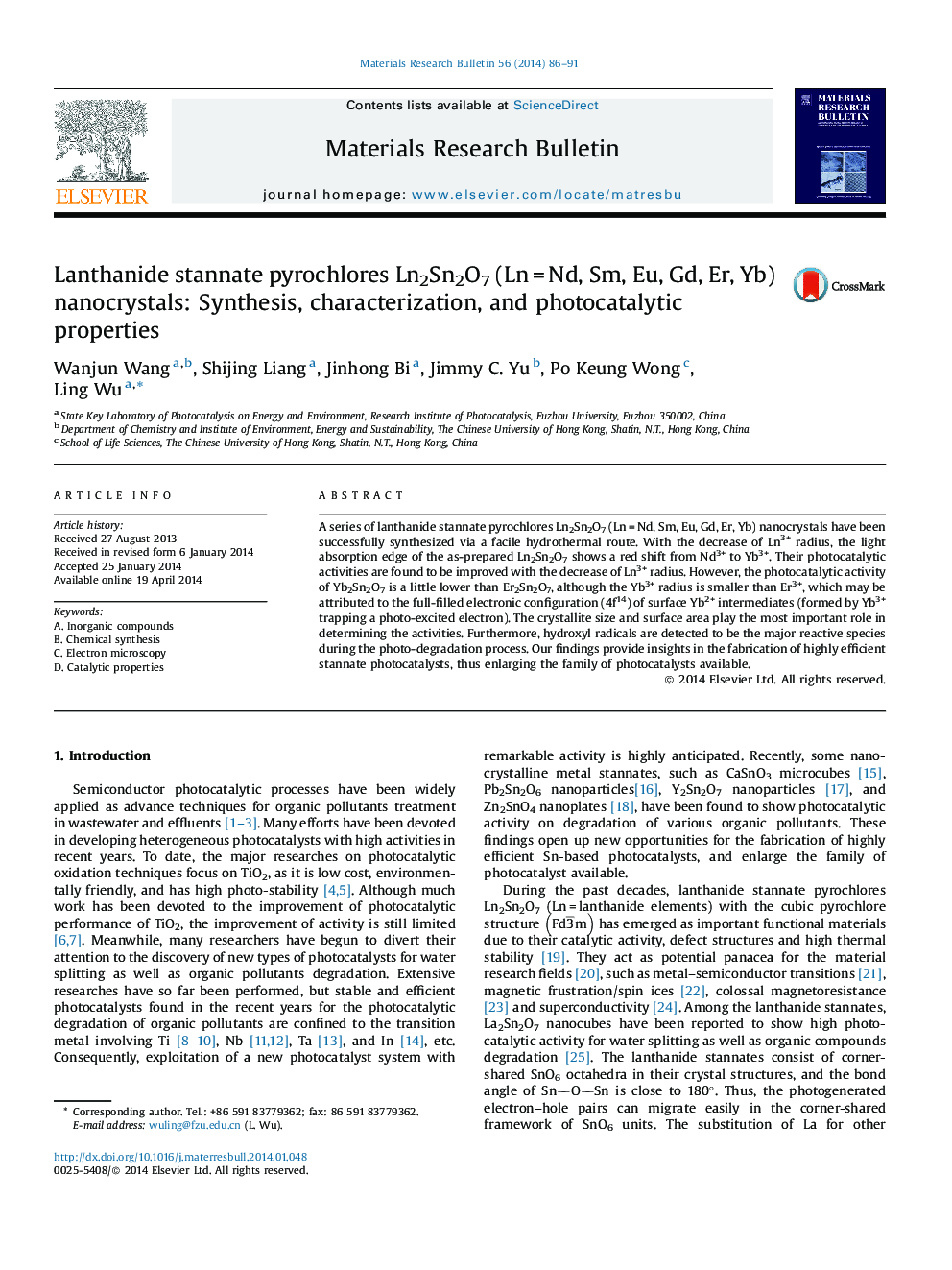| Article ID | Journal | Published Year | Pages | File Type |
|---|---|---|---|---|
| 1488360 | Materials Research Bulletin | 2014 | 6 Pages |
•Ln2Sn2O7 (Ln = Nd, Sm, Eu, Gd, Er, Yb) are synthesized by hydrothermal method.•Light absorption edge shows red shift with decreasing Ln3+ radius from Nd3+ to Yb3+.•Ln2Sn2O7 shows increasing photocatalytic activity with the decease of Ln3+ radius.•Electronic configuration reaches 4f14 under light irradiation may decrease photocatalytic activity.•Hydroxyl radicals are detected to be the major reactive species.
A series of lanthanide stannate pyrochlores Ln2Sn2O7 (Ln = Nd, Sm, Eu, Gd, Er, Yb) nanocrystals have been successfully synthesized via a facile hydrothermal route. With the decrease of Ln3+ radius, the light absorption edge of the as-prepared Ln2Sn2O7 shows a red shift from Nd3+ to Yb3+. Their photocatalytic activities are found to be improved with the decrease of Ln3+ radius. However, the photocatalytic activity of Yb2Sn2O7 is a little lower than Er2Sn2O7, although the Yb3+ radius is smaller than Er3+, which may be attributed to the full-filled electronic configuration (4f14) of surface Yb2+ intermediates (formed by Yb3+ trapping a photo-excited electron). The crystallite size and surface area play the most important role in determining the activities. Furthermore, hydroxyl radicals are detected to be the major reactive species during the photo-degradation process. Our findings provide insights in the fabrication of highly efficient stannate photocatalysts, thus enlarging the family of photocatalysts available.
Graphical abstractFigure optionsDownload full-size imageDownload as PowerPoint slide
